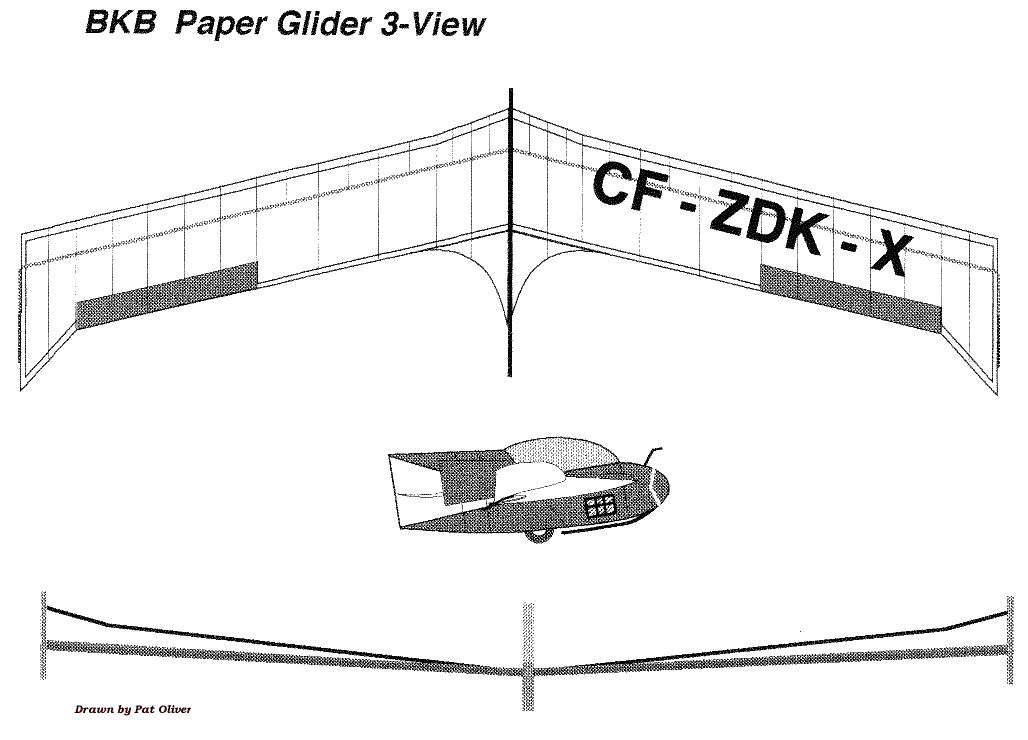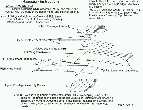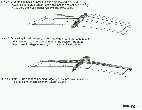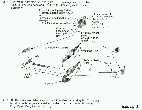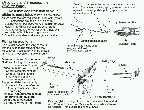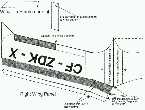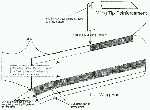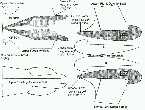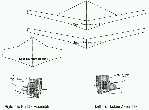| Thanks to the efforts of Pat
Oliver, a long time TWITT member, we are pleased to offer the
flying wing public the opportunity to build their own version of the famous
BKB-1 glider designed by Stefan Brochocki and constructed by him along
with Fred Bodek and Witold Kasper. Pat has developed a number of
different models in this format, but the BKB is his first release in this
type of media. He would love to have teachers use it for classroom
training as a means for students to learn construction techniques, as well
as, learn the science of flight testing their handy work. Both Brochocki
and Bodek have test flown the model and given Pat's work the 'thumbs up'.
The BKB was an experimental design inspired by the Horten sailplane, and was created to serve a specific need in Canadian gliding in the 50's. It was a high performance, tailless aircraft with a glide ratio of 29:1, despite having a low aspect ratio of 10:1. It was most famous for its ability to perform controlled tumbles and recover; not exactly what it was designed for, but perhaps a serendipitous quirk due to its unique stability. This glider was designed with the following objectives: to fill a gap in Eastern Ontario soaring by providing a very stable tailless design that was inexpensive to build, easy to handle in flight, and, easy to maintain. In 1954 the partnership was formed, each member with his specific duties. Bodek and Kasper were to finance much of the project, Stefan to provide design and drawings and create the type record, while Bodek was to provide the excellent illustrations of the mechanical control systems and to collaborate on the design of the craft’s mechanical features. All three were involved in the construction which started in 1955 in Kasper’s basement. After Kasper left the project in late '56 and Bodek in '60, Dave Webb, David Marsden, Hiller Kurlents, George Adams, and Stan Rys assisted in modifications and/or testing. After 1963, it was flown extensively in the USA by Kasper at which time he added the triangular trailing edge tip extension seen in the paper model. Pat has provided us with the means for you to recreate this historic glider in the form of a paper glider that you can fly in your home, hanger, gymnasium, suitable indoor facility or in very light breezes outdoors. It is simple to build, even though it seems to have lots of parts, and performs well when properly trimmed. Clicking on pages 1-5 below will open the full size figure providing the building instructions that can be printed out on regular paper. Pages 6-9 should be printed on light card stock or stiff construction paper in order to give the glider the necessary stiffness. You can experiment with different weights and colors of paper and have contests. The original glider was black and white as seen in the picture of the early prototype above. A glue stick might be the best method of putting the pieces together, but use whatever method you have found successful in similar paper projects. Make sure to dry fit things like the wing stiffeners and fuselage parts before gluing and make any minor adjustments necessary for a good fit. We suggest you go into page setup and adjust your all your browser margins the minimum settings to get the figures to print on a single page. Also disengage the header and footer settings so only the figure prints. This allows for the maximum size of the glider which should be about an 8" half-span. Print testing was done with an HP Deskjet printer, so yours may require other adjustments. If you have trouble printing directly from the web page, save each of the four construction images and make the necessary changes in size to run on your printer. Just make sure that all images are adjusted the same amount so everything stays in the correct proportions. We would appreciate your feedback on how your construction went, how the glider flew and if you used it in a student environment. Drop us a short note at: twitt@pobox.com. |
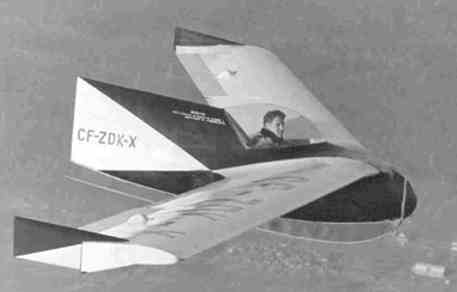 ..................................
..................................